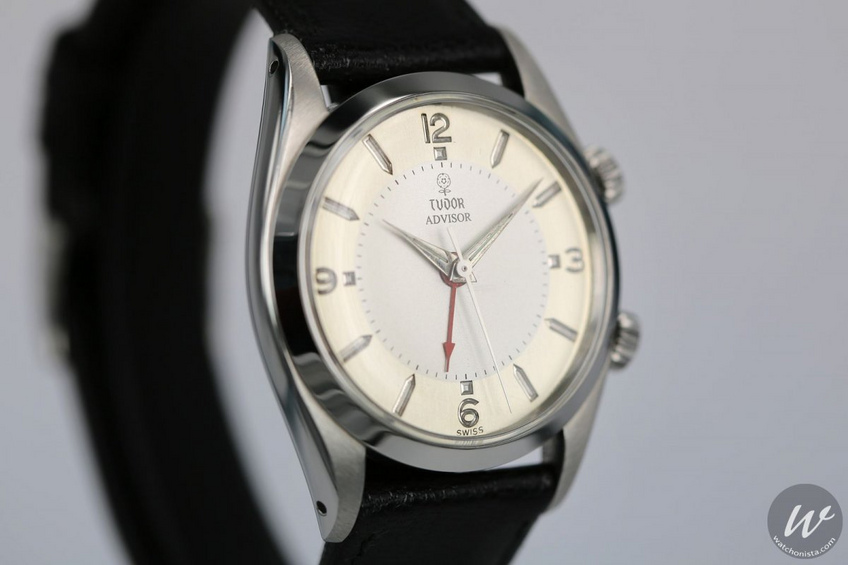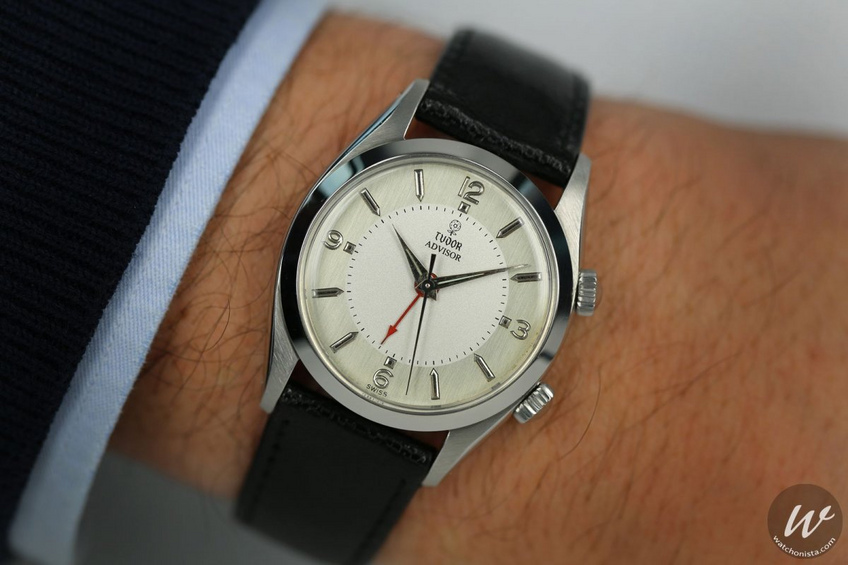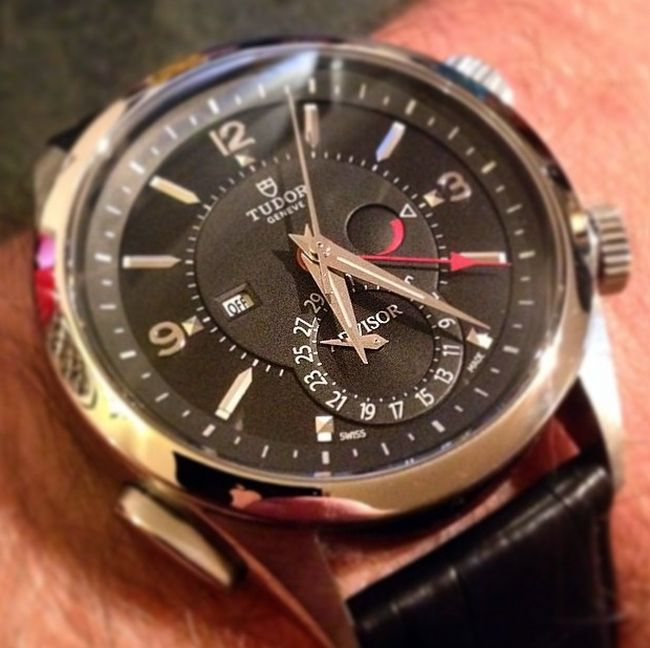


Tudor Advisor: Anonymity Alarming Uncovered
Launched in 1957 and produced in three different versions, the Advisor is the only watch in the Wilsdorf era to offer an alarm function.
I often talk about Tudor being the innovative and experimental branch of ‘Wilsdorf’s World’ - Tudor had the first automatic chronograph and their Submariner was rated to 200m depth ahead of Rolex’s Submariner. There was another watch however that really was a technical achievement for its time and added another string to Tudor’s ‘technical bow’ - the Advisor.
Launched in 1957, the Tudor Advisor reference 7926 was a mechanical alarm wristwatch, housed in a 34mm Oyster case. Tudor used a modified A Schild movement that featured an alarm function where a hammer would strike against a pin welded onto the inside of the caseback. There were three or four different dial variations, mostly with applied hour markers, dauphine hands and a red alarm hand. There was also a rare variation with Ranger-esque 12-3-6-9 markers on the dial.

Unmistakably Tudor in all senses
There is certainly nothing ambiguous about the quality, styling or functionality of this piece. It is unmistakably Tudor in all senses; elegant, luxurious, classic, stylish and a 17 jewel mechanical movement to boot. One of my favourite aspects of these elegant early 34mm Oyster-cased watches are the rivet bracelets that they came on, especially the Swiss-made expandable 6635 version.
The stand out visual difference with the Advisor, when compared to other Tudor Oysters, was the fact that there were two crowns on the right side of the case. As I alluded to in the title of this piece, Tudor had to use a different type of crown on these pieces and so were the only Oyster-cased watches to feature anonymous (ie without the Rolex coronet) crowns. The upper most of the two crowns (at 2 o’clock) was for winding up the alarm, setting the alarm hand and activating the alarm (on or off). The second lower crown was a standard winding and setting crown for the time.

The 7926 was in production for approximately ten years until it was replaced by a new Advisor reference - the 10050 in around 1969. This new Advisor reference was no longer in an Oyster case, but a newly designed case with squarer lugs protruding from a round case. To my mind, these cases resemble the Precision (non-Oyster) gold cased watches from the 1940s and 50s. The dials featured applied hour markers and an applied shield, replacing the rose emblem seen on the 7926. The watches utilised an interesting two piece caseback that formed a larger chamber to enable a clearer and louder alarm sound. The 10050 stayed in the Tudor catalogue until 1977.
Fast forward 34 years, to Baselworld 2011
Tudor unveiled the latest piece in their now eagerly anticipated Heritage Collection - the Tudor Heritage Advisor reference 79620. The second release in the Heritage line has been updated to a more modern wearing 42mm and the case is now made from polished titanium, with a steel bezel ring. Tudor chose the rarest of the 7926 dials as the inspiration for the Heritage watch, the 12-3-6-9 version, with applied numbers and hour markers. One change is that the ‘6’ has been replaced by a handsome date sub-dial (another nice nod to the 1950s Oyster watches!). The modern incarnation of the dauphine hands work really well, as does the red alarm hand. Two additional windows are present on the dial, the first on the left is a small square display that signifies whether the alarm is switched ‘ON’ or ‘OFF’. The second is a very useful power reserve display.

Like it’s forefathers, the Heritage Advisor has two winding crowns. This time however, they are no longer plain - the uppermost crown bears the word ‘Advisor’ and the lower crown the familiar rose emblem. The Alarm is wound up by crown emblazoned ‘Advisor’, which when pulled out also sets the alarm hand. The lower crown sets the time and date. The biggest change to its vintage predecessor is the addition of an oval pusher on the left side of the case that switches the alarm on or off. I believe this is a great improvement on the vintage version and makes activation simple and straight forward - which ultimately suits in the modern context of this watch.
An elegant old-world twist to your wrist
Given the choice, I chose to wear the watch on the black alligator strap, as it gives the watch a very elegant dressy look. For a black tie event, I would be hard pressed to think of a more suitable modern watch for such an occasion. The Heritage Advisor is also available on a steel Oyster bracelet, which gives the watch a sportier look, which without doubt works really well. As with all Heritage watches, the Advisor comes with an additional fabric strap, in the style of a NATO strap.

One point of interest, is the fact that they chose to use the word ‘ADVISOR’ on the dial. The other Heritage models do not bear the words Oysterdate, Submariner or Ranger on their dials and I am sure there is a very good reason for this and I can guess at why, but in this case I think it a nice touch to include the name. The watch wears well on the wrist. As a fan of the early 34mm watches, I often wear them in spite of the fact that they are very small by modern watch standards; they sit well on the wrist for my taste. The 42mm Heritage Advisor doesn’t, however, feel overly large. It sits very sleekly on the wrist and is very comfortable, largely due to the styling of the case and lugs.
The alarm function on the Advisor is something quite special. The vintage Advisors suffered from what you could term a ‘flattening out’ of the alarm sound; the ring running out of power and the sound grinding to a halt. The Heritage release however has overcome that problem and the alarm sounds bright and powerful until its last ring. Vintage or Heritage, the Tudor Advisor is a unique and appealing watch and in a world of mobile phone alarms, brings an elegant old-world twist to your wrist!






